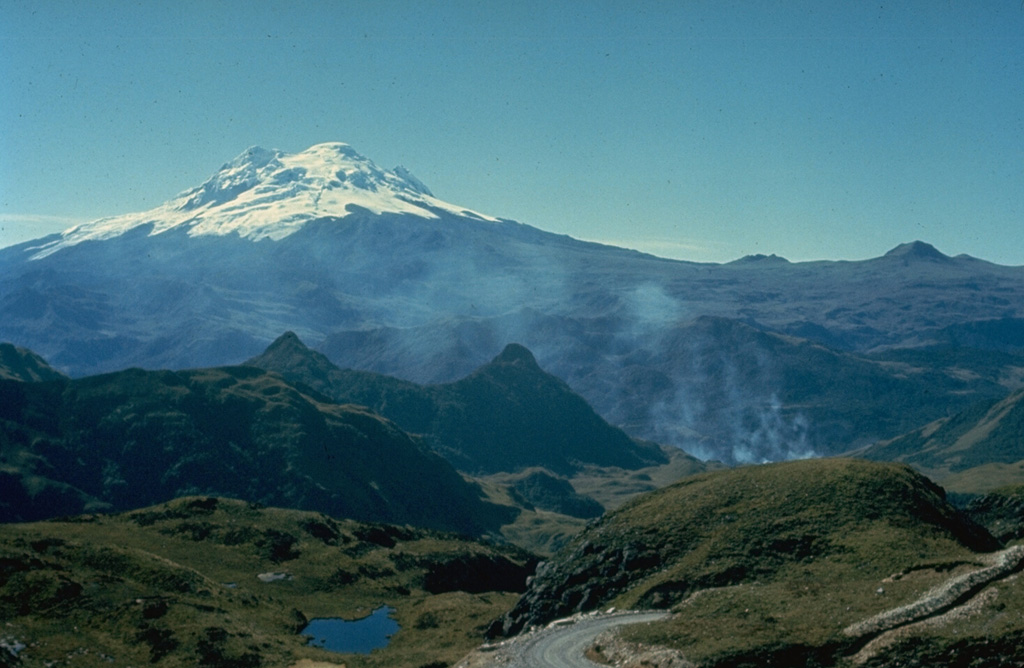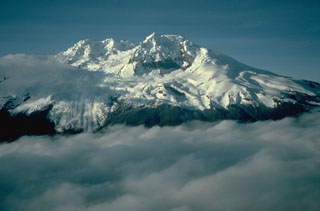Global Volcanism Program | Image GVP-04435

The floor of the massive Chacana caldera is seen here in the foreground, looking SE with glacier-covered Antisana volcano in the distance. Chacana is a 32 x 24 km caldera complex of Pliocene-Holocene age. Its outer flanks extend over 50 km, making it one of the largest rhyolitic centers of the northern Andes. Numerous lava domes were constructed within the caldera, which has been the source of frequent Holocene explosive eruptions. Dacitic lava flows were erupted during the 18th century and numerous hot springs are found on the caldera floor.
Photo by Minard Hall, 1976 (Escuela Politécnica Nacional, Quito).
![]() This image is made available under the Creative Commons BY-NC 4.0 license terms.
This image is made available under the Creative Commons BY-NC 4.0 license terms.

Antisana

Chacana
